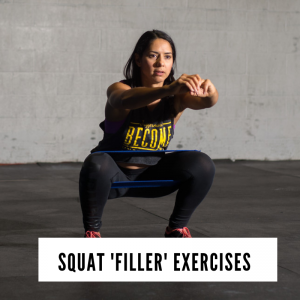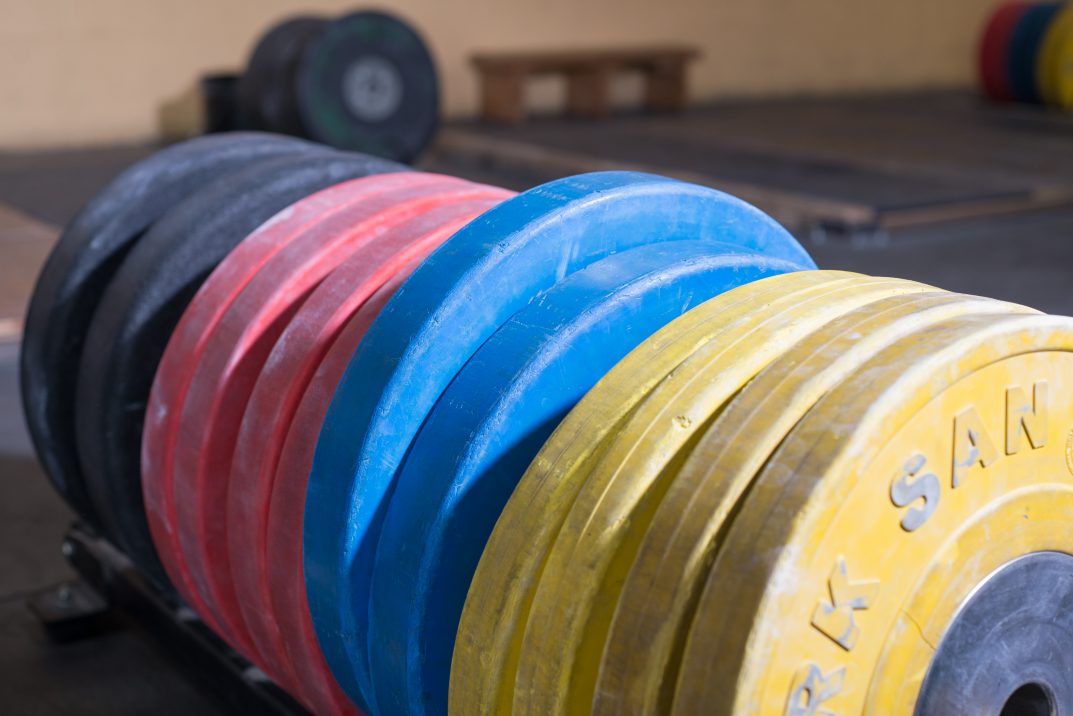People that say squatting is similar to squatting down to a toilet seat don’t understand squats. Or at least, they are oversimplifying an exercise that demands a lot more from us than going #1 or #2.
In order to squat deep and well, you have to meet certain mobility requirements, which I’ve discussed at length HERE, HERE and HERE. Here are the Cliff Notes version for the lazy folks:
Your hips, spine, and ankle need an adequate amount of mobility to perform the barbell squat. Your glutes and core must be strong and active, and depending on your set-up, you may even need some decent wrist mobility.

In other words, there’s a lot more to squatting than just sitting back. This is why for many years now, I’ve incorporated squat- specific filler exercises for myself and my clients who need a little something extra to improve their squat game.
If you’re unfamiliar with “filler exercises,” allow me to explain.
Filler exercises are paired with a big compound exercise to enhance the quality of the main lift(s) without competing with them. They can be used to address specific mobility restrictions, drill form and technique, or increase training volume of a specific body part without beating the body up.
Fillers are a great way to get more bang for your buck during a training session, and even give you something useful to do during the rest periods.
Four Squat Day Filler Exercises
Side lying hip raise
A humbling, next level variation of the clamshell I picked up from coach Bret Contretras. Aside from its booty building benefits, I use this to target the glute medius (they need love too!) and add additional training volume without taxing the body. It’s fairly low stress, although challenging, compared to the barbell squat which makes them the perfect pair. It’s also a nice way to get you to train in a different plane of motion. Complete 8-10x/side
Thoracic extension and Rotation with Foam Roller
If you struggle to keep your chest up and/or elbows up in the front squat, or have a really stiff upper back that impedes your ability to hold the barbell behind you, this quick drill tends to help.
The key is to extend the upper spine over the foam roller while maintaining abs and hips engaged (don’t let them just droop down). It’s hard to tell in this video but the foam roller is just below my scaps. I added rotation in because 1) it feels good and 2) hits those lats. Do 5-10x
Hip flexor Iso (with side bend) + rotation
What a juicy hip opening drill! The isometric hold is perfect for beginners. The added side bend gives you a deeper stretch and gives you some lateral flexion. The hip mobilization with added rotation I grabbed from my friend Tony Gentilcore. If you truly rotate from the hip you get the benefit of the posas stretch plus deeper hip flexion and hip internal rotation. I really had to exaggerate that rotation to make sure it came from the hips and not my back so I placed my hands on my hips to feel it out.
Dead bugs
This is by far my most used filler exercise in my toolkit because it works well and there are a million ways to progress it. However, in this case we’ll keep it plain ‘ol vanilla.
For beginners learning how to brace during the squat, I like to use the dead bug to drill that concept in and demonstrate how active their core must be throughout the squat. I also love it for teaching them how to move slow and controlled, which is something people avoid when they’re really uncomfortable under the bar. Complete 10 reps and you’re golden.C
How to choose your own filler exercises
There are endless possibilities with filler exercises because there are so many to choose from for a variety of reasons. The main things to keep in mind when selecting which ones to add are:
- Your needs & goals – Does the drill/exercise address a specific weakness preventing you from performing the main lift well? Will it get you closer to your goals?
- Your injury history – What injuries or imbalances do you need to watch closely? What exercises can help you prevent an injury you are prone to?
- Your technique flaws – If you have a coach or video your lifts, you may see a few technique flaws. Incorporate correctives or drills to address those specifically
- Your mobility needs – Along the lines of #3. Chose a filler that addresses one of your restrictions. This might change day to day but try to keep it consistent.
Next, chose a filler exercise that either:
A) Enhances the quality of the main lift you’re working on without taxing the body
B) Doesn’t compete with the main exercise and gets you too tired to complete the next set really well
Fillers should enable you to hit each set of the main lift with great technique by either improving your range of motion or helping you drill done on a technique flaw. Don’t get caught up with fancy exercises or complicated set-ups.
Stop guessing and start training! BarbellSTRONG coaching membership is individualized to meet your needs and goals, all with the personalized, high-touch attention of a coach.
Click here to learn more about BarbellSTRONG

